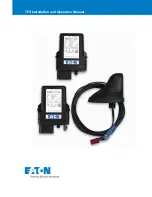
Tech Support:
www.steppir.com/support
Tel: 425.891.6134
Page 16
Before beginning assembly of this antenna, please read the manual in it’s entirety to familiarize your-
self with the task at hand. Doing so will eliminate potential confusion.
Be sure to do an inventory of your parts as soon as possible after receipt of the antenna, and well be-
fore your intended installation date - this way we can get you the parts required before it’s too late.
Following this page are inventory break down lists for each portion of the installation. When doing in-
ventory on the parts, we recommend you divide the items needed for each of the separate steps. It
will make handling and organization of the parts a much easier task!
We recommend you follow the sequence that the inventory breakdown lists are in, regardless of layout
of the DB42 instruction manual.
A large, cleared flat area is recommended for assembly of an antenna of this size and complexity. Typ-
ically, an area 40 ft x 50 ft would be ideal. We recommend using sawhorses or sturdy tables when in-
stalling the boom. By having the boom elevated, it is easier to ensure that the elements are level.
Rubber or nitrile gloves are recommended when applying the anti-seize to the stainless steel fasteners
or the aluminum boom sections.
If you do not have room near the tower to assemble the antenna, we suggest you find a place that you
can put the antenna together in it’s entirety and then disassamble as needed for transportation to the
tower area.
Be sure to refer to the DB42 configuration drawing on the following page so that you can fully under-
stand how the antenna operates. In addition, the configuration drawing identifies EHU placement,
which is important as you progress in your installation of the antenna.
Use of a level for adjusting the Element Housing Units (EHU’s) is highly recommended. This is a sur-
prisingly accurate and consistent method. Simply place the level on the mast plate, and adjust each
element accordingly.
Be sure to use the anti-seize compound supplied to prevent the galling of the stainless steel fasteners.
If you do not use the anti-seize, count on issues with the hardware galling. Heat is one of the primary
culprits with galling, so if you use a ratchet, steady speed as you tighten will help minimize galling. We
have found that when the anti-seize is applied to the bolt portion of the hardware, it will eliminate any
galling issues.
There is one exception to using the anti-seize - do NOT use the anti-seize compound when connecting
the plastic sweeps coupler to the pole ends. This will be covered in more detail later in the manual.
Preparing to Build the DB42 Yagi
PREAMBLE
















































